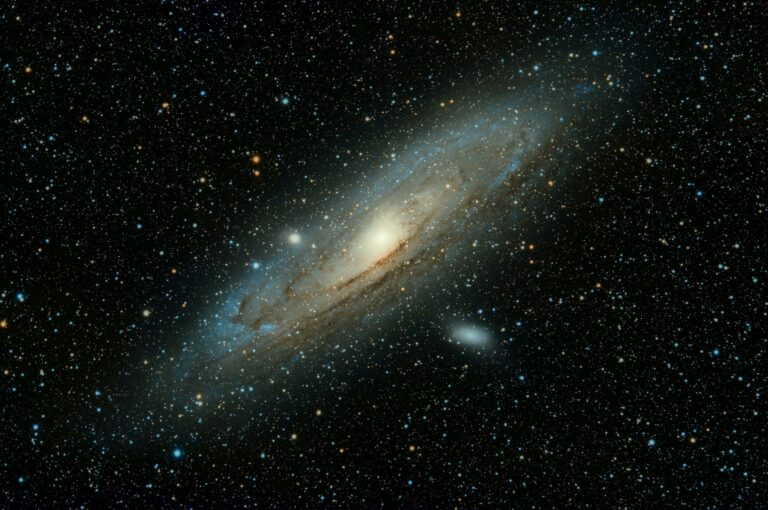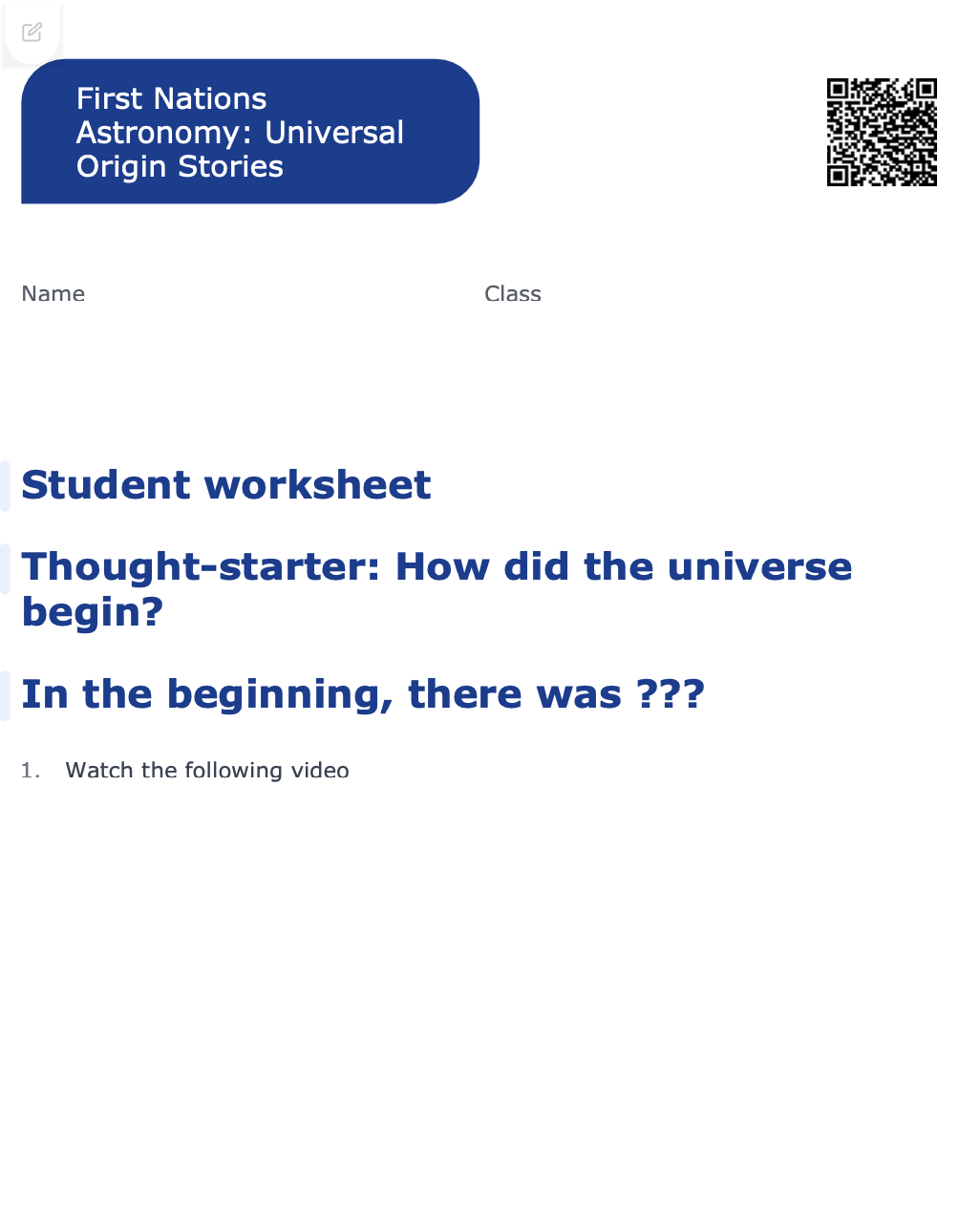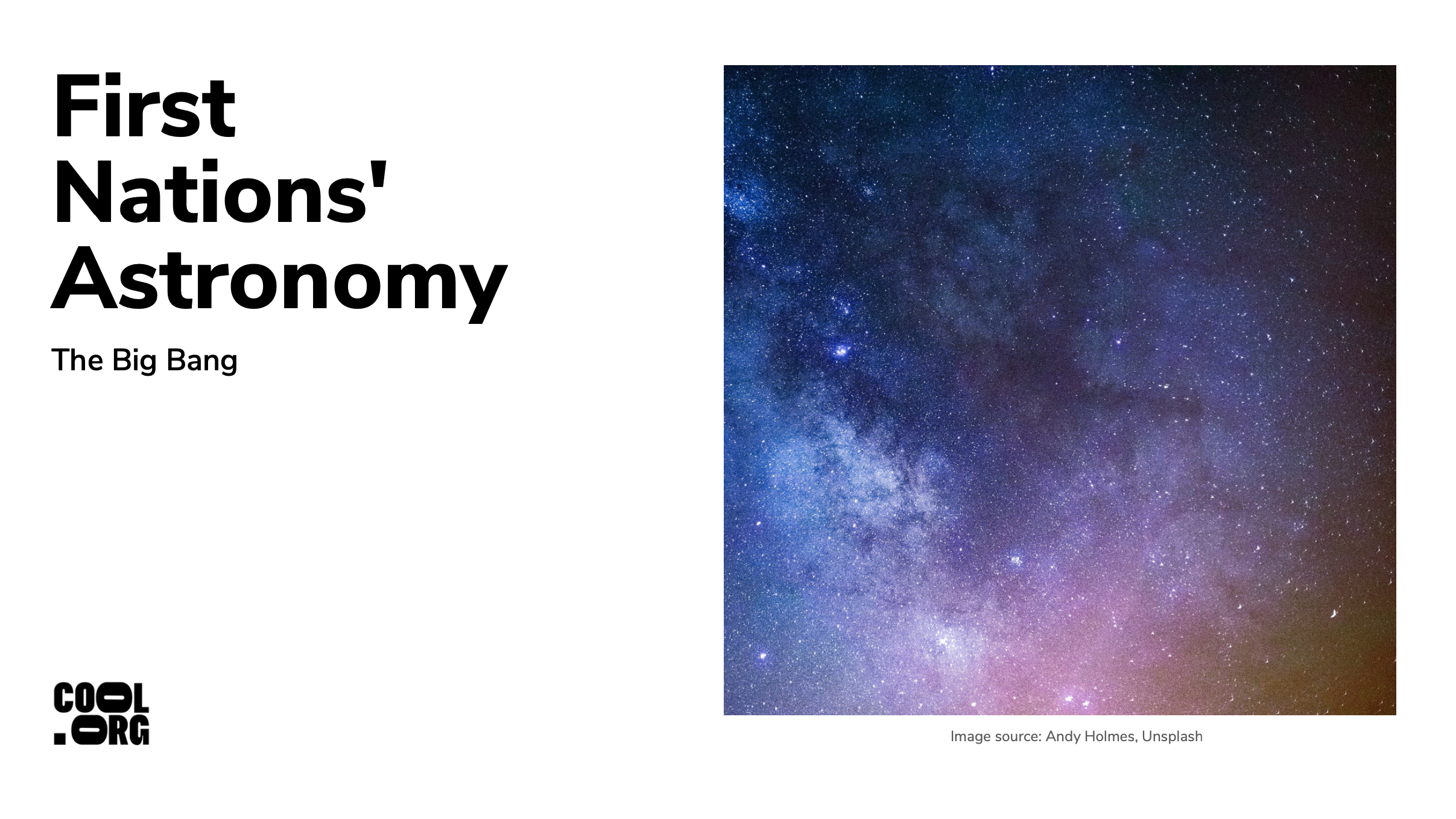Lesson summary
Students learn about the evolution of our understanding of the universe’s origins by comparing a range of cultural and scientific interpretations of celestial phenomena.
Learning intentions:
Students will...
- explore how our understanding of the origin and evolution of the universe has developed over time
- understand the many ways over time we have observed, interpreted and utilised information from the night sky
- understand the methods used to collect astronomical data and the modes of dissemination of astronomical data by First Nations peoples, other cultures and modern methods.
Success criteria:
Students can...
- compare a range of cultural and scientific interpretations of celestial phenomena in relation to the origin and evolution of the universe
- articulate the diversity of knowledge generated from astronomical observation by First Nations peoples.
Lesson guides and printables
Curriculum links
Select your curriculum from the options below.
Lesson details
Curriculum Mapping
Australian Curriculum (v9.0) content descriptions - Science
Students learn to:
- describe how the big bang theory models the origin and evolution of the universe and analyse the supporting evidence for the theory (AC9S10U03)
Syllabus outcomes: SC4-12ES
General capabilities: Intercultural understanding
Cross-curriculum priority: Aboriginal and Torres Strait Islander Histories and Cultures
Relevant parts of Year 10 achievement standards: They (students) sequence key events in the origin and evolution of the universe and describe the supporting evidence for the big bang theory.
Level of teacher scaffolding: High - articulate the concept of scientific curiosity from an intercultural perspective, facilitate idea generation strategies
Resources Required
- Computer
- Projector
- First Nations Astronomy Lesson 2 Slide deck containing images from the lesson
Skills
This lesson is designed to build students’ competencies in the following skills:
- problem-solving
- curiosity
- research
- cultural understanding
- intercultural understanding
- creativity
- communication
- reflection
Additional Info
Warning: Aboriginal and Torres Strait Islander peoples are advised that these lessons may contain images, voices and names of deceased persons.
This is an original Cool+ lesson.





Welcome back!
Don't have an account yet?
Log in with:
Create your free Cool.org account.
Many of our resources are free, with an option to upgrade to Cool+ for premium content.
Already have an account?
Sign up with:
By signing up you accept Cool.org's Terms and Conditions(Opens in new tab) and Privacy Policy(Opens in new tab).